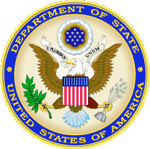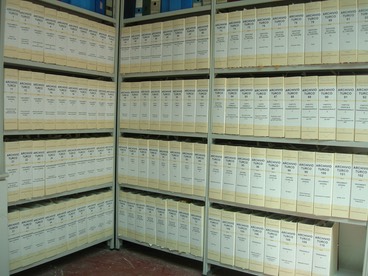 |
Released by the Bureau for International Narcotics and Law Enforcement Affairs, U.S. Department of State - Washington, DC, 1 March 2001
AFGHANISTAN
I. Summary
Afghanistan continues to be the world's largest opium producer after another year of major increases. Afghanistan now accounts for 72 percent of the world's illicit opium supply. Despite severe drought conditions in much of the country, reliable USG estimates indicate that cultivation increased by 25 percent and potential production reached 3,656 metric tons. Traffickers of Afghan heroin continued to route most of their production to Europe but also targeted the United States. The Taliban and Northern Alliance factions vie for national control of Afghanistan and both control territory used by cultivators, refiners and traffickers. The United Nations International Drug Control Program (UNDCP) and non-governmental organization (NGO) efforts at supply and demand reduction have had little success due to the lack of cooperation and support from the Afghan factions. The factions, especially the Taliban, which controls 96 percent of the territory where poppy is grown, promote poppy cultivation to finance weapons purchases as well as military operations. Those in positions of authority have made proclamations against poppy cultivation but have had little or no effect on the drug trade, which continues to expand.
The Taliban issued in late July a new ban on poppy cultivation. However, it is not clear how serious the Taliban's efforts are to enforce the ban. Nor is it clear that a ban on poppy cultivation will impede a drug trade suspected by the international community to have large quantities of opium in storage. The announcement of the opium ban has caused opium prices to rise, a boon for traffickers sitting on large stockpiles. Neither the Taliban nor the Northern Alliance has taken any significant action to seize stored opium, precursor chemicals or arrest and prosecute narcotics traffickers. On the contrary, authorities continue to tax the opium poppy crop at about ten percent, and allow it to be sold in open bazaars, traded and transported.
Afghanistan is party to the 1988 UN Drug Convention, but no political faction took meaningful steps in 2000 to meet Afghanistan's obligations under the Convention. In 1996, the Taliban pledged to deal with narcotic drugs according to international drug control conventions. In June 2000, the International Narcotics Control Board invoked article 14 of the Single Convention on Narcotic Drugs of 1961 against the Taliban for failing to extend support and cooperation to all international agencies working in the drug control field.
II. Status of Country
In 2000, Afghanistan remained the largest producer of opium poppy in the world, despite a protracted drought and an ongoing civil war and political instability. The Taliban and Northern Alliance continued to focus on the internal struggle for control of Afghanistan. By the end of 2000, the Taliban controlled 85 to 90 percent of the country's territory, including over 96 percent of the area where opium poppy is cultivated. The Northern Alliance has nominal control over the remaining four percent of the opium growing area, mostly in Badakhshan and Takhar provinces.
In the year 2000, potential production was estimated by the USG at 3,656 metric tons, two and a half times that of Burma, its nearest competitor for illicit poppy cultivation. New areas of poppy cultivation, high opium prices at planting and adequate water during the growing season spurred the record crop. Most of the poppy is grown on irrigated, prime agricultural land, and was unaffected by a devastating drought in the region during 2000. Afghanistan's poppy fields therefore produce very high yields per hectare.
Drug production in and trafficking from Afghanistan is affecting, negatively, the region. The drug trade corrupts local authorities, is the major factor behind skyrocketing regional heroin addiction in refugee and indigenous populations, and is responsible for increased levels of terrorism and drug-related violence in neighboring countries. The Afghan drug trade also undermines the rule of law by generating large amounts of cash, contributing to regional money laundering and official corruption in countries with weak economies and institutions.
III. Country Actions against Drugs in 2000
Policy Initiatives. The U.S. Government does not recognize either of Afghanistan's major political factions but holds those factions responsible for illicit activities within their areas of control and operation. The Northern Alliance has taken no action of which we are aware against cultivation and trafficking in its area. However, in July 2000, Taliban "supreme leader" Mullah Omar issued a decree to end poppy cultivation nation-wide in the 2000/2001 growing season. This decree followed the one issued in September 1999 to reduce poppy cultivation by one-third. While there have been some credible reports of scattered enforcement actions related to the new ban on poppy cultivation, it will not be possible to assess the extent of any eradication or reduction in cultivation until mid-2001. The Taliban made no discernible attempt to enforce decrees banning or reducing poppy in 1997 and 1999. Rather, cultivation increased countrywide in those years.
Accomplishments. No Afghan faction took any significant steps to achieve the goals and objectives of the 1988 UN Drug Convention. In June 2000, the International Narcotics Control Board invoked article 14 of the Single Convention on Narcotic Drugs of 1961 for failing to extend support and cooperation to all international agencies working in the drug control field.
The "State High Commission for Drug Control" (SHCDC) is a partner with UNDCP in Taliban-controlled areas on drug control projects. UNDCP's pilot alternative development/poppy reduction projects in Nangarhar and Qandahar provinces had mixed results in achieving poppy reduction targets last growing season. UNDCP-managed small-scale development assistance projects did not achieve significant reductions in opium cultivation and claimed decreases were offset by the expansion of cultivation in new districts. Only in Qandahar did poppy cultivation actually decline, but not by one-third as decreed. Local authorities continued to maintain a 1998 ban on opium production imposed in the Xebec district of Badakhshan province. In 1999 Badakhshan authorities subsequently extended it to the districts of Eshkashem and parts of Baharak. As a whole, Badakhshan opium poppy cultivation declined by 16 percent in 2000.
Because alternative development programs have had little or no effect and the controlling authorities continue to profit from the illicit trade, the international community has grown resistant to supporting alternative development projects in Afghanistan. As a result, UNDCP has insufficient donor support for its Afghanistan alternative development programs and is closing them down. The U.S. continues to support the UNDCP's annual opium poppy survey in Afghanistan as well as UNDCP crop monitoring programs.
Law Enforcement Efforts. In the absence of an effective central government, a trained antinarcotics force and an operational drug policy in Afghanistan, there is virtually no counternarcotics law enforcement. Afghanistan does not have any effective national institutional arrangements for the planning and coordination of drug control efforts. Local Taliban authorities claimed to have seized and burned 335 kilograms of opium and 4,500 kilograms of cannabis publicly in Qandahar in March 2000 but this has not been verified. There were no independently verifiable reports of arrest or prosecution of drug traffickers or local drug dealers. In November, the Nangarhar Taliban authorities claimed to have closed down a drug market in the notorious Ghani Khel bazaar in Shinwar district. The head of the Taliban's Anti-Narcotics Commission claimed destruction of cannabis cultivation in Logar and Balkh provinces in June and July 2000. None of these reports could be verified. Some local Shuras (councils of elders) are reportedly supporting the 2000 poppy ban. During October to November 2000, 28 farmers in Nangarhar reportedly were detained for violating the ban on sowing poppy seeds.
Also in Nangarhar, local authorities reportedly eradicated 200 hectares of poppy along the Torkham-Darunta road in April 2000; however, independent observers suggest the area eradicated was far smaller than reported and may have already been harvested. Despite this and other Taliban promises to destroy heroin laboratories, open narcotics refining is flourishing.
Agreements and Treaties. Afghan governments have signed a number of international conventions, and made specific commitments concerning the cultivation, trafficking and abuse of illicit drugs in Afghanistan. Afghanistan is a party to the 1988 UN Drug Convention, the 1971 UN Convention on Psychotropic Substances, and the 1961 Single Convention. There is no evidence of compliance with any of these agreements. Afghanistan also signed the UN Convention Against Transnational Organized Crime in December, 2000.
Cultivation and Production. Afghanistan is the world's largest producer of opium and a major producer of cannabis. An estimated 3,656 metric tons (MT) of opium gum was produced in 2000. Poppy cultivation and opium production increased 25 and 28 percent respectively, spurred by high opium prices at planting, adequate water conditions during the peak poppy growing season, and the failure of authorities to oppose the development of new areas for poppy cultivation.
Afghanistan's area under poppy cultivation has more than quadrupled since 1990. Opium poppy cultivation was found in 22 out of 29 provinces in 2000, according to the UNDCP. Helmand province alone accounted for more than half of the total opium poppy cultivation in Afghanistan and was responsible for 39 percent of the world illicit opium supply. By USG estimates, Helmand province dominated cultivation with 33,300 ha, followed by Nangarhar province with 15,800 ha in 2000.
An infrastructure for the production of morphine base and heroin has been developed in Afghanistan in contrast to the situation several years ago when nearly all heroin refining took place outside the country. Most laboratories refining opium into heroin operate in Nangarhar and Helmand provinces. Some laboratories also may be located near the Afghan borders of Central Asian countries.
Drug Flow/Transit. Opium trading in Afghanistan and Southwest Asia is well-organized and well developed. Traders offer growers advances to finance inputs, and tide growers over while the crop is in the ground. They visit households to buy opium. This credit, or advance payment on future opium production is an integral part of livelihood strategies in poppy producing areas of Afghanistan. The relatively stable value of opium and its nonperishability mean that it also serves as an important source of savings and investment among traders and cultivators. Taliban authorities reportedly facilitate the internal transit and export of drugs for traffickers.
As much as half the quantity of illicit drug produced in Afghanistan could be consumed in Afghanistan and its neighbors Iran, Pakistan, Tajikistan, Uzbekistan, Turkmenistan, and other states in Central Asia and the Persian Gulf, according to UNDCP estimates. U.S. seizure data suggest that at least five percent (approximately one metric ton) of the heroin imported into the U.S. originates in Afghanistan. Smuggling routes are varied. Historically heroin has been trafficked to Europe and North America through Pakistan, Iran, and Turkey, but smuggling routes through the Central Asian Republics are proliferating. Afghanistan provides raw opium primarily for local consumption in Pakistan, Iran, and the Persian Gulf, where trafficking organizations have strong links.
On a regional basis, UNDCP operates a number of programs to reduce Afghan drug trafficking in Southwest Asia, including specific law enforcement programs with Turkmenistan, Uzbekistan, Tajikistan, Pakistan, and Iran. Tajik, Iranian and Pakistani law enforcement forces are engaging more frequently in armed confrontations with well-equipped narcotics traffickers moving large quantities of drugs across the Afghanistan border.
Domestic Programs/Demand Reduction. Drug abuse is rising in Afghanistan. The increase in opium and heroin production inevitably has made more of these drugs available on the local market, despite any official attempts to prevent this from happening.
According to the UNDCP, heroin, opium and hashish are the most commonly abused drugs, along with a wide variety of easily available pharmaceutical drugs such as analgesics, hypno-sedatives and tranquilizers. Heroin, opium and other narcotics are almost exclusively ingested orally or inhaled, and are very rarely injected. Of particular concern is opium abuse among women and passive opium exposure of very young children. This year UNDCP cited anecdotal reports from Kabul suggesting an "epidemic" of tranquilizer use among women.
Heroin addiction is a rapidly growing problem especially in Jalalabad, Kabul, Qandahar, Herat as well as in expatriate Afghan communities in refugee camps. A Taliban court in October 1997 issued a decision that "addicts of illicit drugs should be referred to a hospital/treatment center to receive proper treatment." Nonetheless, the Taliban continues to incarcerate rather than treat drug addicts in Afghanistan. Effective institutional arrangements for the planning and coordination of demand reduction programs, in particular, are not in place in Afghanistan. Kabul's remaining mental hospital is reportedly the only place in Afghanistan providing limited specialized treatment for drug addicts. The hospital sees about 200 problem drug users per month, mostly heroin addicts. Some non-specialist hospitals and clinics in Afghanistan provide treatment to drug users. In Badakhshan province, where between ten to 25 percent of the local population is believed to use opium, at least one NGO has set up drug treatment facilities, but security concerns have forced the UNDCP to close a demand reduction program in Badakhshan.
UNDCP's drug awareness program in Afghanistan is limited by a lack of resources. Its drug demand reduction program focuses on the need for providing community based drug treatment and prevention programs. With the BBC Afghan Education Project, the UNDCP's Drug Demand Reduction Project published 15,000 picture books on the effect of drugs, leaflets on the consequences of heroin and cannabis use, and posters and calendars with an antidrug message. In 2000, UNDCP organized campaigns in Qandahar using the district shura, community representatives, and local representatives. UNDCP also trained over a hundred female community mobilizers in drug awareness, basic health, and sanitation.
IV. U.S. Policy Initiatives and Programs
The U.S. continues to urge the Afghan factions to demonstrate that they take international drug control obligations seriously. USG officials have repeatedly urged Taliban officials to respect and implement Afghanistan's international obligations on terrorism, narcotics, and human rights. In addition, the U.S. introduced and actively promoted the adoption of Security Council resolution 1333, which requires all states to prevent the sale, supply, or transfer by their nationals or from their territories of acetic anhydride to any person in the territory in Afghanistan under Taliban control. Regionally, the U.S is cooperating with the UNDCP and Afghanistan's neighbors to build national and regional capacities to counter the Afghan drug trade. The USG has been active in the UN-sanctioned Six Plus Two Group (Iran, Pakistan, China, Tajikistan, Uzbekistan, and Turkmenistan, plus the U.S. and Russia) in its efforts to launch a regional counternarcotics initiative. In May 2000, the USG supported a UNDCP-sponsored Technical Experts meeting in Vienna that brought together Six Plus Two members and donor countries to develop a broad-based response to situation in Afghanistan and the surrounding region. In September, with the exception of Turkmenistan, the Six Plus Two Group signed a Regional Action Plan to counter the Afghan drug trade.
The Road Ahead. Prospects for meaningful progress on drug control efforts in Afghanistan remain dim as long as the country remains at war. Nothing indicates that either the Taliban or the Northern Alliance intend to take serious action to destroy heroin or morphine base laboratories or stop drug trafficking. The degree of implementation of the 2000 opium poppy ban cannot be verified until mid-2001. To the extent that poppy continues to displace wheat production in Helmand and in the country as a whole, Afghanistan will face increasingly severe food shortages. The USG seeks to contain the flow of opium and heroin from Afghanistan through a stronger focus on regional counternarcotics cooperation. As coordinator of the Six Plus Two counternarcotics initiative, the USG will continue to support and advance the Regional Action Plan. The USG will continue to impress upon all Afghan factions the importance of unconditional and verifiable counternarcotics measures, not merely claims and publicity measures.
Afghanistan Statistics (1992-2000) |
|||||||||||||||||||||||
| Opium
|
|
2000 |
1999 |
1998 |
1997 |
1996 |
1995 |
1994 |
1993 |
1992 |
|||||||||||||
Potential Harvest |
ha |
64,510 |
51,500 |
41,720 |
39,150 |
37,950 |
38,740 |
29,180 |
21,080 |
19,470 |
|||||||||||||
Eradication |
ha |
- |
- |
- |
- |
- |
- |
- |
- |
- |
|||||||||||||
Cultivation |
ha |
64,510 |
51,500 |
41,720 |
39,150 |
37,950 |
38,740 |
29,180 |
21,080 |
19,470 |
|||||||||||||
Potential Yield(1) |
mt |
3,656 |
2,861 |
2,340 |
2,184 |
2,099 |
1,250 |
950 |
685 |
640 |
|||||||||||||
(1) Note: Potential production estimates for 1996-1999 have been revised upward from previous INCSRs, reflecting improved methodologies for estimating opium yields. The estimates of land area under poppy cultivation in Afghanistan for those are unchanged and have not been revised. |
|||||||||||||||||||||||


